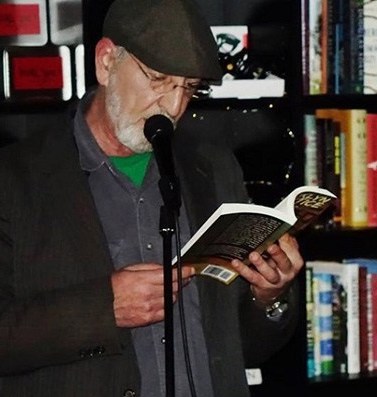The Accidental Series by J. L. Abramo
 The Accidental Series or, When Your Fans, Your Curiosity and Your Characters Won’t Let You Go
The Accidental Series or, When Your Fans, Your Curiosity and Your Characters Won’t Let You Go
Reading series fiction when growing up, The Hardy Boys, Tarzan, Sherlock Holmes; and later Perry Mason, Philip Marlowe, The Lord of the Rings; I wondered. When does the writer decide to write a series—before or after the first book? How patient are series fans expected to be for the next installment? How and when does the writer decide a series has run its course? Can a series rest entirely on the shoulders of the main protagonist, or does it require a number of recurring supporting characters—and if so, how many? Can the writer take a break from a series, perhaps to write a stand-alone, without risking the loss of his or her series audience—and if so, for how long?
When Catching Water in a Net won the St. Martin’s Press/Private Eye Writers of America prize for Best First Private Eye Novel, the reward was publication by St. Martin’s/Minotaur in 2001.
I had not thought about the book as the first in a series, and had not been planning a sequel—but that is what St. Martin’s wanted, so that is what I gave them. Twice. Clutching at Straws was published in 2003, and Counting to Infinity in 2004.
After the third book, I felt I had little more to say about Jake Diamond and his band of cohorts and believed it would not benefit my creative urges to milk it. I tried selling St. Martin’s on a stand-alone. They wouldn’t bite—so we parted ways.
What I wanted to write was a novel set in Brooklyn—and more specifically in the neighborhood where I grew up, Gravesend. I felt a strong need to re-explore. I hoped I could defy Thomas Wolfe’s contention that you can’t go home again. The experience was much like what T. S. Eliot predicted when he wrote: We shall not cease from exploration and the end of all our exploring will be to arrive where we started and know the place for the first time.
Following Gravesend (2012) and Chasing Charlie Chan (2013), I was tempted to revisit the world of Jake Diamond by requests from fans of the series and, frankly, I missed the gang.
A number of questions plagued me. Did I still know Jake and his regulars? Did they have room to grow? Was it too long a hiatus? To my surprise, I found writing the fourth in the series was like reuniting with old friends—old friends with much more to tell.
 Circling the Runway was released in 2015 and Jake was back in business—nearly a dozen years after his last appearance. And back with enough authority to earn the novel a Shamus Award. A series I had never really planned on—a series I thought had seen its day—was alive and kicking. And that is the nature and reward of a series. Satisfying the curiosity of the writer and the reader about where the characters are headed next—and all of the surprises.
Circling the Runway was released in 2015 and Jake was back in business—nearly a dozen years after his last appearance. And back with enough authority to earn the novel a Shamus Award. A series I had never really planned on—a series I thought had seen its day—was alive and kicking. And that is the nature and reward of a series. Satisfying the curiosity of the writer and the reader about where the characters are headed next—and all of the surprises.
And that brings us to Coney Island Avenue.
Up until its inception—Gravesend was my most personal and ambitious novel. It was a journey—as are all creative endeavors—a journey I felt I needed to begin and a journey I hoped others might want to take with me. On the surface a crime novel, Gravesend is much about how people deal with adversity—positively or negatively—and how those choices can determine who they will become. Gravesend is also about a place—where I was born and raised. A place I knew and ultimately learned to know better. A place which, although often referred to as ‘the fourth largest city in America’ had, and still has to an extent, a small-town feel because of its neighborhoods. In Gravesend, a large cast of characters populate the streets—often brushing against each other accidentally and unknowingly—until their paths collide in the finale.
Gravesend took me from Jake Diamond’s San Francisco to the streets of Brooklyn—from a private eye office above an Italian Salumeria in North Beach to an NYPD Precinct on Coney Island Avenue. As with Catching Water in a Net, the novel was not planned as a start to a series but—as with that first Jake Diamond mystery—readers, the writer and the book’s characters themselves demanded more story. I was very satisfied with Gravesend, and the novel was well received, which made me somewhat hesitant about following-up what may have been an act too hard to follow. But what is a writer, a musician, a painter, a dancer, who is afraid to take chances? Coney Island Avenue became somewhat a contradiction—a sequel to a stand-alone. The new novel is, as many novels are—an account of good and evil, triumph and tragedy. And just below the surface, a timeless tale of fathers, mothers, sons and daughters.
If two books with recurring players qualify, I have inadvertently roamed into a second series. If and when the stories of Jake Diamond and his sidekicks or of the men and women of the Sixty-first Precinct will continue is still a mystery to me—but I believe these characters will eventually let me know.













Great blog, Mr. Abramo! Very illuminating as to how you developed the series…how they came to be. Having read all but one of your books so far, this article sheds new light and insight on your process. I will have to pay more attention to elizabethawhite.com.
Thank you Sonny W…hope you will enjoy the one you haven’t got to yet…
Thanks for stopping by. Have a slew of guest posts coming up over the next few weeks, so stay tuned. 🙂
I wondered about the long break between Diamond novels. Thanks. It was a treat to be at your table when you won the Shamus last year. Well earned.
Thanks, Dana…it was quite a night in New Orleans…my buddy Jake Diamond was the comeback kid…
It was great visiting. Thank you for the invitation. Hope to join you again in the future.
It was an honor to host you, and the door is open any time you want to stop by again in the future.